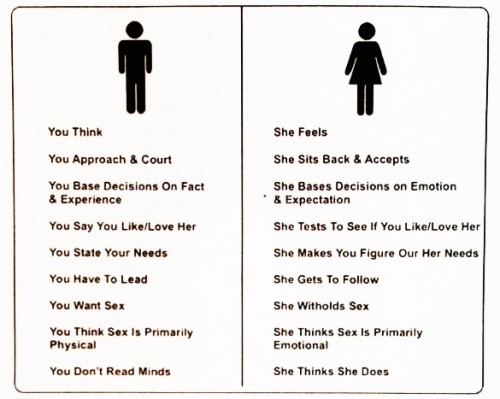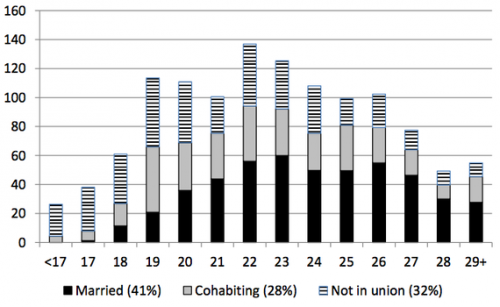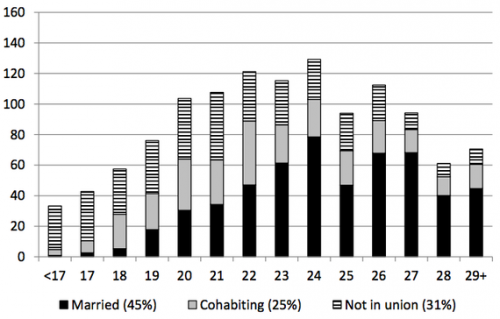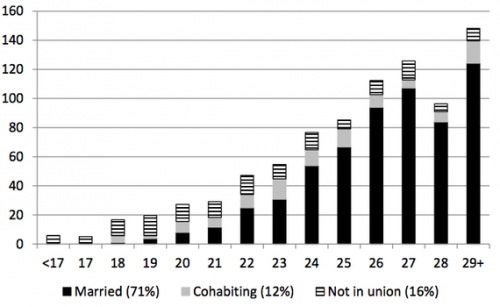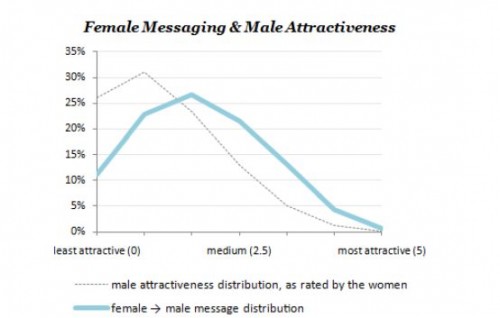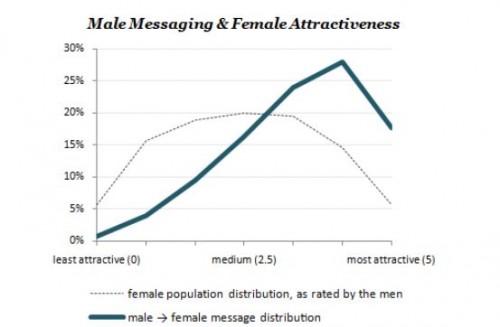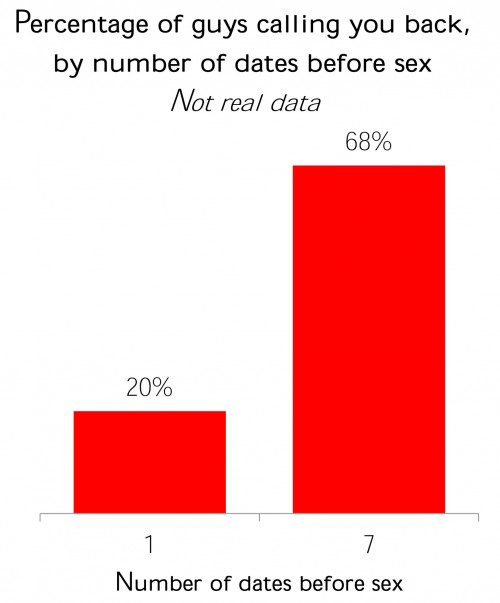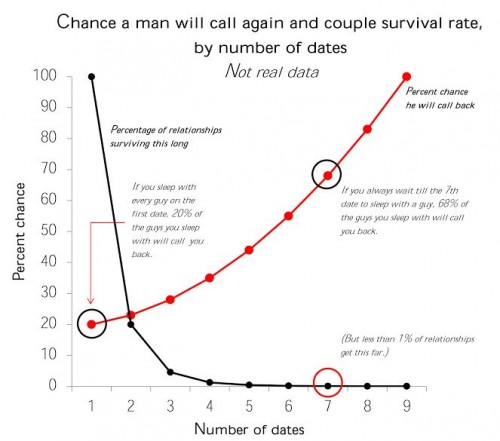Flashback Friday.
Dating site OKCupid did an analysis of 500,000 inquiry messages to determine what keywords correlate most strongly with getting a reply. It has some great lessons about dating and some counter-stereotypical news about what heterosexual women want from men.
This first graph shows that mentioning someone’s level of attractiveness decreased the likelihood of getting a response (for both men and women), though men were more likely to mention looks. But general compliments about one’s profile increased the likelihood of getting a response (the middle line is the average number of responses, the green bars signify an increase in the number of responses, and the red bars a decrease):
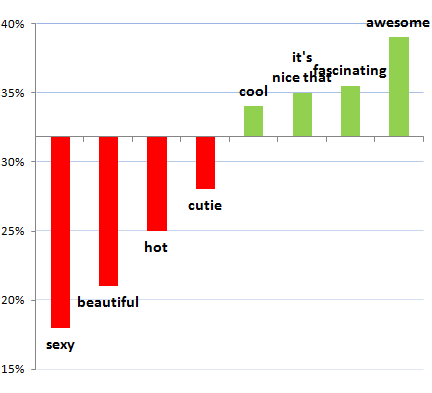
A good lesson in operationalization: “pretty” is used in two ways in our culture, so when they made sure to differentiate between pretty (meaning “sort of”) and pretty (meaning “attractive”), you can see clearly the way that commenting on looks decreases the recipients’ interest:
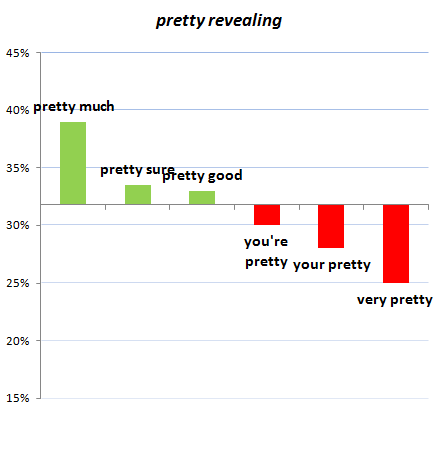
So, in contrast to stereotypes, many women cannot be flattered into a date (though the figure above includes men and women, I’m assuming most people being called “pretty” are female).
Further, the site found that when men sent messages, female recipients preferred humility to bold self-confidence. The words below all increased the chances of a woman responding to a man’s inquiry:
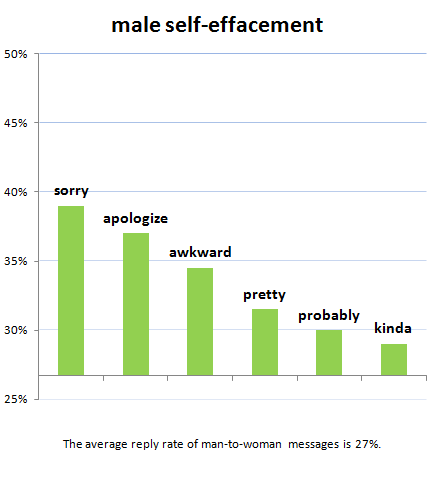
Instead of bravado and flattery, women appear to actually like men who take an interest in them. They respond positively to phrases that indicate that a guy actually read their profile and is interested in the content of their person:
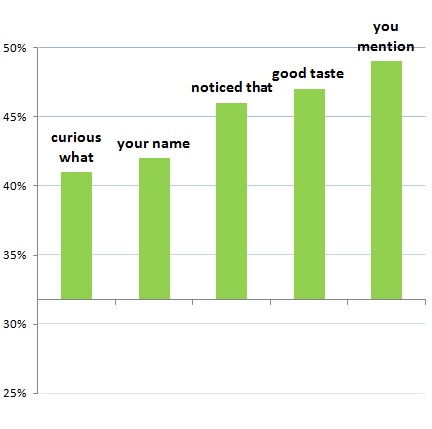
The lesson: Treat a woman (on the OK Cupid dating site) like a human being and she will respond positively.
And to answer the question, “What do women want?” As my dear friend David Landsberg would say: “Everything!”
This post originally appeared in 2009.
Lisa Wade, PhD is an Associate Professor at Tulane University. She is the author of American Hookup, a book about college sexual culture; a textbook about gender; and a forthcoming introductory text: Terrible Magnificent Sociology. You can follow her on Twitter and Instagram.

